A museum-grade mid-17th century Dutch silver marriage casket or knottekistje, circa 1660
£9,500
Follow Us
A museum-grade mid-17th century Dutch silver marriage casket or knottekistje, circa 1660.
Raised on solid silver bun feet the miniature casket is profusely engraved to all faces depicting a courting couple and architecture entwined in scrolling foliage. The reverse of the coffin depicts the last supper, however, if you look closely, you can see a boy stealing food or wine from underneath! Possibly, this is the courting gentleman showing that he had a sense of humour.
The scratch lined moulded top is surmounted with an intricate handle (once gilt) and floral patera to the centre. There are two inscriptions each within a cartouche ‘In Lÿfde Beltact het al’ and ‘Getrouw tot in den doot’ which loosely translates to ‘faithful until the death’ and ‘love is everything’.
Wedding caskets such as this were a speciality of Friesland. Traditionally, a man’s promise of marriage to his future bride and was formal when he presented her with a coin knotted into a costly cloth (knottedoek). This later became a textile bag and then in the seventeenth century, the silver coffin (knottekistje). Though, examples such is this were reserved for the rich and noble.
The Dutch Golden Age in the Netherlands began in circa 1588, when the Dutch Republic was established, to 1672, when the Rampjaar occurred. Dutch trade flourished the most prominent in Europe.
Later struck with two Dutch tax marks in the form of a dolphin.
Weight 3.9oz.
Condition
Good. Wear consistent with age and use. Lovely original condition in line with age and use. Though we cannot be certain of the style, it is likely that it once had a cast push release.
Dimensions
Height: 7 cm (2.76 in)
Width: 7.8 cm (3.08 in)
Depth: 4 cm (1.58 in)
PREVIOUSLY SOLD
No Results Found
The page you requested could not be found. Try refining your search, or use the navigation above to locate the post.
No Results Found
The page you requested could not be found. Try refining your search, or use the navigation above to locate the post.
YOU MAY ALSO LIKE
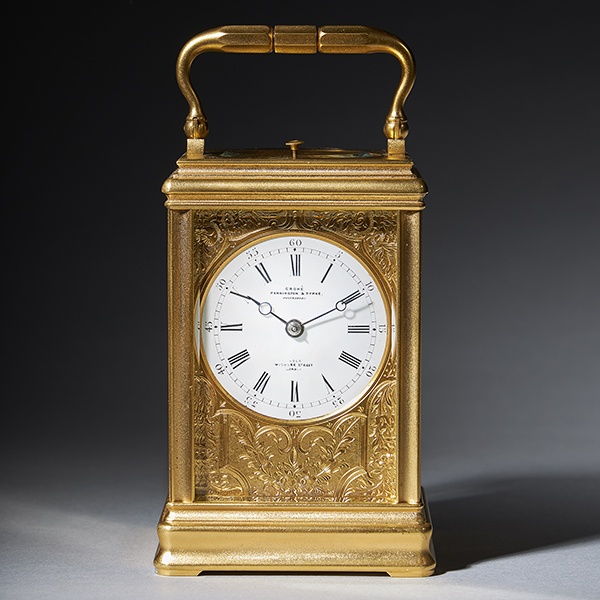
19th Century Repeating Gilt-Brass Carriage Clock by the Famous Drocourt
19th Century Repeating Gilt-Brass Carriage Clock by the Famous Drocourt £5,600 Follow Us19th Century Repeating Gilt-Brass Carriage Clock by the Famous Drocourt A superb repeating carriage clock with a gilt-brass gorge case by the famous maker...
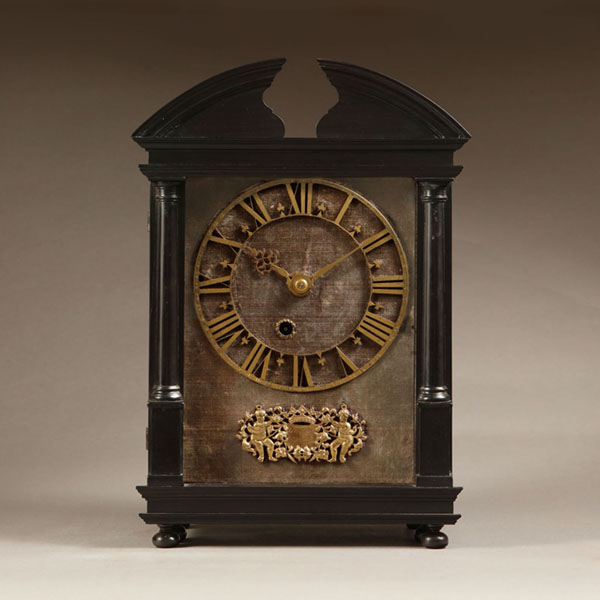
17th-Century Hague Clock Signed by Pieter Visbagh, circa 1675
Small 17th Century Hague clock made c. 1675 by Pieter Visbagh, who was apprenticed by Salomon Coster. The latter made the first pendulum clock according to the instructions of Christiaan Huygens, the internationally renowned scientist who developed the idea of applying a pendulum to a clock movement.
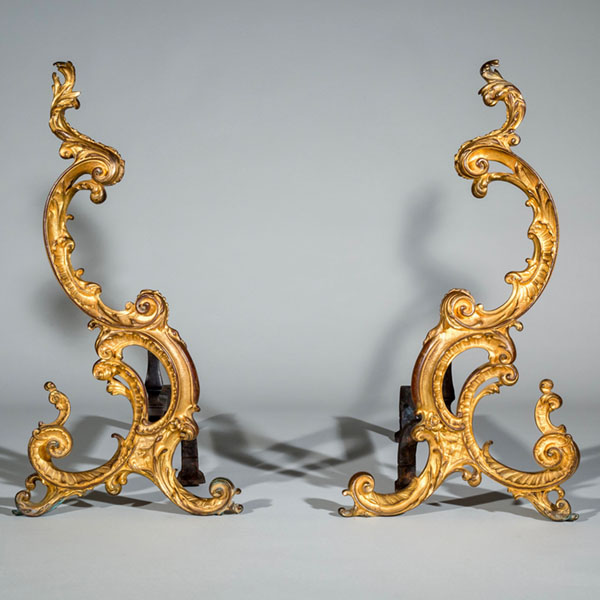
Pair of 18th-Century English Rococo Gilt Bronze Andirons or Firedogs
An exceptional pair of 18th century English Rococo gilt bronze andirons or fire dogs.
The bold shape of these andirons relate to designs of Thomas Johnson (1714–1778), one of London’s pioneers of the ‘Modern’ or French style, later known as Rococo.
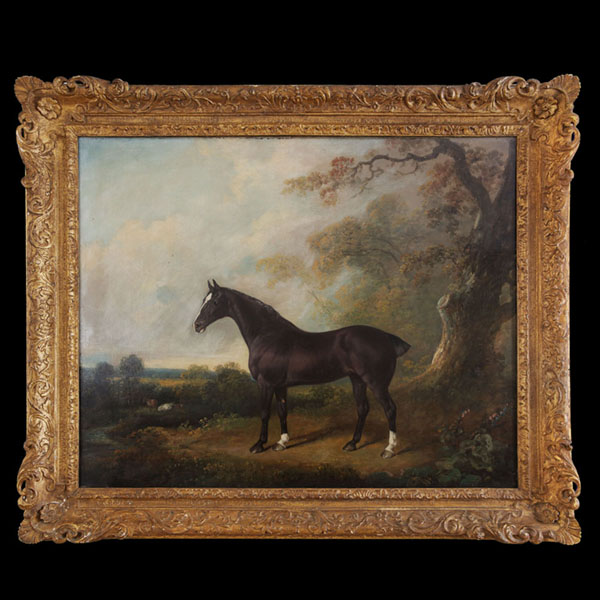
Oil Painting of a Horse Standing Proud in Woodland
Fine Art – Charles Henry Scwanfelder (1774-1837). Signed C H Schwanfelder Pinx and dated 1825. An exceptional portrait of a horse standing proud in woodland, in front of a tree-lined vista incorporating cows residing by a stream.
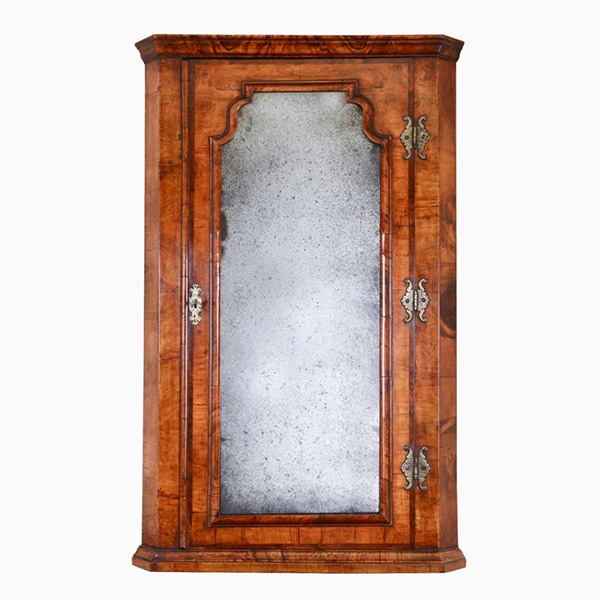
Queen Anne Walnut Corner Cupboard with Bevelled Mirror Plate
A truly remarkable find in original condition. To the door a shaped soft bevelled mirror plate is framed by a cross-grain molding of typical queen Anne design which is further cross-banded, feather-banded and edged to the opening with a single de-molding.

19th Century Repeating Gilt-Brass Carriage Clock by the Famous Drocourt
19th Century Repeating Gilt-Brass Carriage Clock by the Famous Drocourt £5,600 Follow Us19th Century Repeating Gilt-Brass Carriage Clock by the Famous Drocourt A superb repeating carriage clock with a gilt-brass gorge case by the famous maker...

17th-Century Hague Clock Signed by Pieter Visbagh, circa 1675
Small 17th Century Hague clock made c. 1675 by Pieter Visbagh, who was apprenticed by Salomon Coster. The latter made the first pendulum clock according to the instructions of Christiaan Huygens, the internationally renowned scientist who developed the idea of applying a pendulum to a clock movement.

Pair of 18th-Century English Rococo Gilt Bronze Andirons or Firedogs
An exceptional pair of 18th century English Rococo gilt bronze andirons or fire dogs.
The bold shape of these andirons relate to designs of Thomas Johnson (1714–1778), one of London’s pioneers of the ‘Modern’ or French style, later known as Rococo.

Oil Painting of a Horse Standing Proud in Woodland
Fine Art – Charles Henry Scwanfelder (1774-1837). Signed C H Schwanfelder Pinx and dated 1825. An exceptional portrait of a horse standing proud in woodland, in front of a tree-lined vista incorporating cows residing by a stream.

Queen Anne Walnut Corner Cupboard with Bevelled Mirror Plate
A truly remarkable find in original condition. To the door a shaped soft bevelled mirror plate is framed by a cross-grain molding of typical queen Anne design which is further cross-banded, feather-banded and edged to the opening with a single de-molding.




















